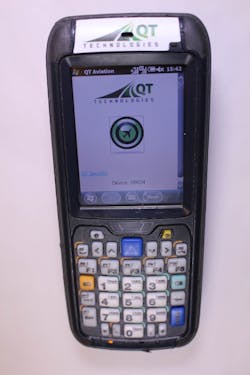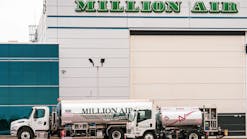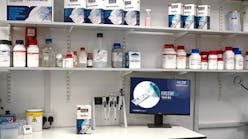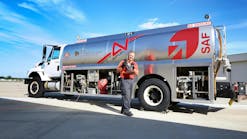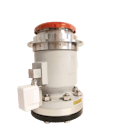With numerous factors to weigh, fueling an aircraft quickly and accurately to get it ready for departure can be a complicated process.
Between tracking flight schedules, anticipating proper fuel loads, identifying correct fuels and dispatching people with fuel tickets, there is a lot of information to keep organized. Then, if a change is made, that fueling event becomes even more complicated.
So the idea behind the Fuel Ticket Automation system from QT Technologies is to simplify the process for fuel suppliers, into-plane providers and airlines, and in the process, eliminate costly mistakes like mis-fuelings and over-fuelings.
“While one of QT’s primary goals is removing paper – it’s about interacting with the airlines’ systems to try and do as much as possible in terms of data integration and automation through the fueling event to improve accuracy and reduce costly delays,” says Wade Conley, president at QT Technologies.
The Fuel Ticket Automation (FTA) system provides a cloud-based portal, which a fuel vendor is able to access and dispatch flights out to fuelers and manage the fueling operation, itself. Fueling vendors have access to tickets and reports about their fueling operation to confirm fuelings were done according to what was requested by a flight planning group.
“We have a ton of reports and very critical information we display to the fueling staff involved,” Conley explains.
In addition to the portal, FTA utilizes a non-incendiary mobile device that provides the most current flight data and fuel information to workers on the ramp. This allows an airline to select the aircraft it is going to use, assign a proper fuel load based on the weather patterns, determine the weight of the aircraft and ensure the wing balance is accurate based on the fuel tanks of the plane – then relay the information to the fuelers quickly.
“Airlines are continuously issuing distributions of planned fuel loads prior to departure. And there might be 10 different distributions that lead up to the final one that generally comes in about 60 minutes in advance of the time of departure,” Conley says. “So the fueling operation, without QT, are relying on querying data from each airlines’ different systems.
“QT gathers that information and displays it down to the fuelers and the fueling organizations so there’s not somebody at the local level responsible for doing that,” he continues. “So when you’re servicing the aircraft, you always have the latest data to use to appropriately and accurately complete the fueling event.”
Changes to the information are displayed as an alert to the fueler. The flow of fuel can actually be stopped, requiring the fueler to acknowledge a change has been made before fueling can resume.
A barcode is associated with every piece of fueling equipment – whether it’s a tank truck, fuel cart or hydrant – to ensure fuelers are attaching to the correct truck or cart and using the appropriate fuel. The fueler then uses the handheld device to scan the barcode to let the system know what equipment is being employed, which also allows fuel usage to be tracked.
When a fueling event is complete, FTA electronically sends a fuel ticket to the pilot, eliminating the need to physically deliver a ticket to the cockpit.
Also during fueling, airlines can stay in tune with the status of fueling and when the event is going to be completed based on flow rates of that equipment. Airlines can use that information to recognize if there may be a delay and move an incoming aircraft to another gate, so that they’re not wasting time leaving that plane on the ramp and delaying turnaround.
In addition to simplifying the fueling process and providing maintenance data, a number of safety measures are implemented through the FTA system, including overfill protection and fueler certification verification.
“Not over-fueling is a very important part of this,” Conley says. “We deploy a device that goes on the fueling equipment called a Fuel Data Unit.”
The Fuel Data Unit connects with its own valve to act as a secondary dead-man to control the flow of fuel. It also communicates to the handheld, mobile device to inform the fueler how much fuel has been pumped. Avoiding over-fueling situations eliminates the defueling process and keeps departures on time, which is critical to every airline.
The Fuel Ticket Automation system also prevents fuelers from being assigned tasks they are not certified for, helping airlines reduce risks, liability and potential fines.
“In the U.S., many times fuelers are not fuelers for their career. So it is a very short-term position for folks, in general,” Conley explains, adding QT Technologies will interface on a direct basis with an airline’s certification system to ensure a dispatcher doesn’t erroneously assign a flight to somebody who isn’t certified.
“It tells the dispatcher this person is no longer certified for this type of aircraft,” he says. “It forces them to dispatch it to a fueler that is certified.”
The Fuel Ticket Automation system provides benefits to suppliers, delivering pre- and post-reconciled data to and sharing that information with into-plane companies and airlines as well. QT Technologies provides its services to commercial aviation operations, primarily, but also works with general aviation companies and, recently, FBOs too.
Conley says the biggest operation is in Atlanta, where 1,100 flights per day at Hartsfield International Airport are fueled. But he says there are also operations utilizing FTA where only five flights per day take place.
The system, which has been deployed globally, requires a subscription to use the service in addition to equipment that needs to be deployed. Equipment can be purchased from QT Technologies or leased.
With on-time departures as the primary goal, Conley says QT Technologies can help fueling events be as efficient as possible by reducing trips between the ramp and the shop, avoiding mistakes and making fuel operations safer.
“We’re trying to do as much as possible to get rid of paper and this inefficient process, as it exists today, and migrate to having everything done electronically – having the last good data and having our device read automatically from the fuel equipment so somebody’s not responsible for getting things right, calculating numbers and filling out forms.”
